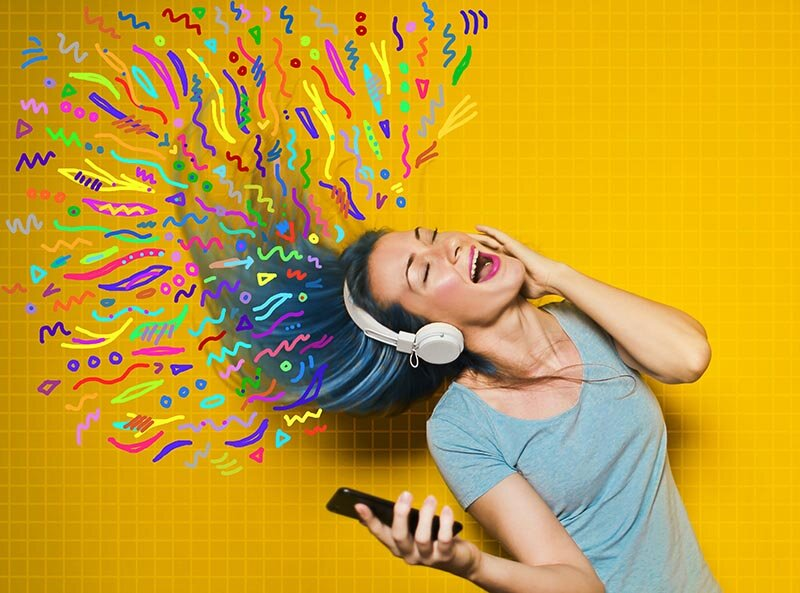Can you hear the color?
 Photo: okwhatever.org
Photo: okwhatever.org
Many of us have personally met people who see or sense colors where there are none, assign certain shades to the days of the week or visualize music like an equalizer. Some find practical applications for their unusual abilities.
For example, Ford has a synesthetic expert position. The technician must touch, smell and listen to cars. More in the video: youtu.be/dj7FNTGonFQ
For centuries, scientists did not take such quirks seriously, mistaking them for the product of mental disorders or a figment of the overactive imagination. In recent years, however, synesthesia has begun to be accepted by the scientific community as a real phenomenon.
What is synesthesia?
Synaesthesia is a phenomenon of perception, which consists in the fact that an impression corresponding to a given stimulus and specific to a given organ sensation is accompanied by another, additional sensation or image, often characteristic of other senses.
 Photo: elemental.medium.com
Photo: elemental.medium.com
An example of synaesthesia is the perception of music in color. But unlike artistic, meaningful juxtapositions of color and music, synesthesia is spontaneous.
It is believed that the Dutch post-impressionist painter Vincent van Gogh, who saw the timbre of color, the French symbolist poet Arthur Rimbaud, and the Russian composer Alexander Skryabin, the inventor of light music, the abstractionist artist Vasily Kandinsky, and one of the most famous masters of visual poetics, the writer Vladimir Nabokov, were synesthetes.
Neurobiologists say that in early childhood we were all synesthetes. In the brain of infants, impulses from sound, color, taste, and touch are not yet clearly delineated. After the first year of life, the multifunctional neural connections are broken and we turn into «normal» people.
Some of the most common types of synaesthesia are:
- Music-color — perception of music in the form of involuntary or patterned color bands, spots or waves
- Phonemic-color — involuntary association of the sound of the human voice with a particular color
- Grapheme-color — associations of the outlines of letters and numbers with certain colors
- Phonemic-taste — the appearance of taste associations from the sound of certain words
How many synesthetes are there in the world?
A study conducted in the United Kingdom found that the prevalence of synesthesia was 4.4%, and the most common type of synesthesia was the association of days of the week with certain colors. The same study found an equal distribution of synaesthetes among men and women.
Link to the study itself: Multisensory Perception: From Laboratory to Clinic
Perhaps you, too, are a synesthete?
You can detect synaesthesia by comparing your perception with that of others. Some synaesthetes may go a lifetime without ever learning about their peculiarities. Others are aware that their perception is different, but are unaware that this feature has its own name and that it is actively studied by scientists and psychologists.
It is difficult to confirm or deny the real existence of the synaesthesia phenomenon, but it is even more difficult for a person with this sensory experience to describe it to others (what color a melody, sound might be). Even if several people with the same type of synaesthesia are found, their descriptions of sensations can differ greatly.